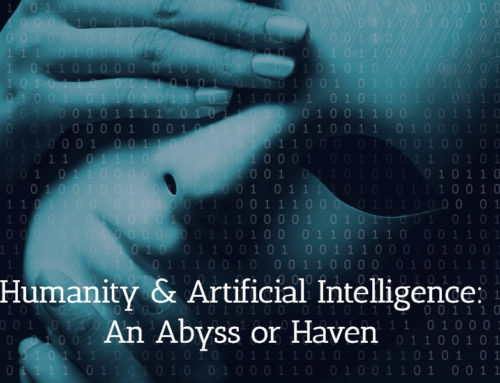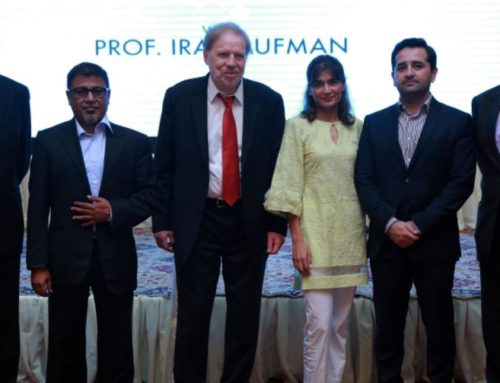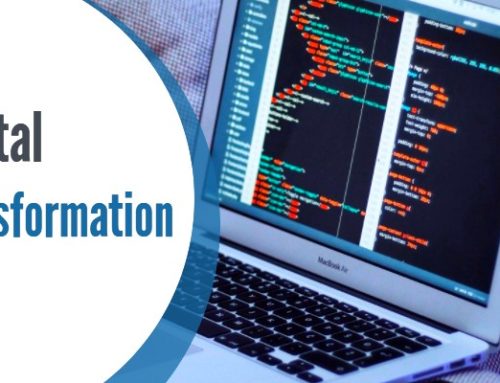Digital is changing the way business operates, forever altering the content of messaging, control over brand, interaction with customers, and communication with stakeholders. We are all, to some degree, students of the digital evolution – executives and non-profit managers, owners and entrepreneurs. Below Ira Kaufman and Chris Horton discuss how clarifying and aligning an organisation to a successful digital strategy can help a company achieve its sustainable business goals. –reposted from The European Financial Review, Dec 20, 2014.
By Ira Kaufman and Chris Horton
Even though we each may have different experiences and responsibilities, we all face the same overarching challenge: to rapidly prepare for the Digital Tsunami already reaching our shores and learn how to effectively respond to the rapid digital transformation following in its wake. Doing so requires individuals and organisations have the confidence and understanding to make digital integration and transformation a strategic imperative.
Digital Disruption
One doesn’t have to look too hard to find evidence of the profound impact digital is having on the marketing function. The following statistics from a 2013 research report issued by Adobe (aptly titled Digital Distress: What Keeps Marketers Up at Night?) reflect the “digital dilemma” facing marketers:1
- Only 9% of respondents strongly agree with the statement, “I know our digital marketing is working.”
- 82% of marketers admit that they don’t have formal digital training and are learning on the job.
- 76% of marketers are struggling to keep up because the marketing profession has changed more in the past two years than it has in the past 50.
These sentiments are underscored by comments from leading marketers operating on the front lines of digital transformation:
“Marketers are facing a dilemma: They aren’t sure what’s working, they’re feeling underequipped to meet the challenges of digital, and they’re having a tough time keeping up with the pace of change in the industry… What’s worse no one hands you a playbook on how to make it work,” says Ann Lewnes, CMO, Adobe Corporation.2
Clark Kokich (former Chairman of Razorfish) admits “There are hundreds of thousands of people who were trained and mentored, and studied classical marketing, and they got good at it… Unfortunately, the world has changed – and that education is no longer relevant.”3
However, marketers are not the only ones who must grapple with the demands of digital transformation which permeate all levels of the enterprise, as Capgemeni Consulting notes on the “digital transformation” section of the company’s website: “Although the impact of digitisation is not new, the digital economy is entering a new age that presents unprecedented challenges for all CEOs. Digital tools are invading the business environment, provoking significant changes in the way we work, communicate, and sell. This has given rise to new opportunities and challenges, and has triggered the Digital Transformation of enterprises.”4
On a strategic level, the transparency and mindset of the digital age is challenging the C-suite to reconsider business outcomes in the broader context of creating social value.5 According to the 2012 Edelman goodpurpose® study, 87% of consumers worldwide want business to place at least equal weight on society’s interests as its business interests. And in the digital age it becomes increasingly clear when a business does not do that. Former President Bill Clinton suggests that “In the future, corporations will care less about maximising profits and more about employees and society.”
The Digitally Integrated Organisation
In the global marketplace, three forces are converging to transform the organisation – core values, digital technologies, and sustainable outcomes (for both society and business).
Core values are commonly held as the foundation of many an owner’s business philosophy. However, all too often they never go beyond a framed list on an office wall or an “about us” page on a website. By contrast, a transformed organisation integrates and activates its core values through its strategic plans and operations.
We suggest that the truly transformed organisation will have the characteristics of a Digitally Integrated Organisation (DIO). The DIO integrates digital technology and marketing strategy with core values to drive organisational goals that lead to sustainable outcomes for both the organisation and its stakeholders, including the greater community to which it is connected.
A company’s journey towards a DIO (digital, sustainable, values-driven organisation) evolves through three stages.6
- PASSIVE STAGE – there is formal compliance and support for minimum requirements like corporate social responsibility initiatives and environmental regulation. There is no impetus to drive positive change.
- PROACTIVE STAGE – company leaders define the customer experience and their employee and community/environmental goals and practices and set minimum requirements.
- SUSTAINABILITY STAGE – company leaders transition to a values-driven, sustainable business strategy that serves to drive social and economic benefits for the organisation and its consumers, employees, shareholders, and the greater communit
The Digitally Integrated Organisation (DIO) integrates digital technology and marketing strategy with core values to drive organisational goals that lead to sustainable outcomes for both the organisation and its stakeholders.
The speed and movement between stages is affected by competitors’ changes, consumers and employees’ challenges, and company crises. For example, the Barclay Group UK Wall Street scandal forced the bank to transform its company culture. After the impropriety, Barclay’s new CEO Antony Jenkins said the bank would commit to the five values of respect, integrity, service, excellence, and stewardship. “We get it. We are changing the way we do business, we are changing the type of business we do and we are setting out a new course.”7
Digital Transformation: Preparation
Digital transformation is the impact of digital on the organisation. Digitisation transforms the organisation on three levels:
• EXTERNAL – The customer experience or the external communications of the organisation.
• INTERNAL – The business operations, or the internal communications and decision making of the organisation.
• HOLISTIC – The entire organisation; therefore the transformation strategy must be holistic and inclusive of all business segments and functions.
In recognising the disruption – i.e. the challenges and opportunities – of the digital marketplace, the C-suite needs to prepare their executive team, and ultimately all staff, for the step–by-step transformation of the organisation. In truth, many top executives are not prepared for the tactical challenges associated with organisational digital transformation, such as how to properly combine digital technologies with core values and business goals to create integrated digital marketing (IDM) strategies that optimise business outcomes for all stakeholders.
Managing digital transformation includes a total re-examination of an organisation’s business model, from how it is designed to how it operates and implements. As global search and advisory firm Forrester reports in its Six Steps to Become a Digital Business, “You must think of your company as part of a dynamic ecosystem of value that connects digital resources inside and outside the company as needed to compete. You must harness digital technologies, both to deliver a superior customer experience and to drive the agility and operational efficiency you need to stay competitive.”8
The first step is to set priorities. This can be done by determining areas of vulnerability and high risk in the organisation, and then by adopting a digital mindset to tackle those areas. At this stage, it is critical to have C-suite agreement on values and the definition of social return-on-investment (SROI). Doing so better enables the executive team to design a digital vision and strategy that is conducive to integrating core business values across the entire organisation. All of this will help in achieving the eventual goal of developing a sustainable and competitive organisation.
Digital Transformation: Implementation
Once the C-suite has determined its priorities, it needs to develop and implement action strategies that have agreement from their executive team and buy-in across the organisation. Digital transformation is not a linear progression; the leadership team must respond to the challenges of the competitive environment and the needs of the organisation by implementing select action strategies that reflect digital transformation best practices.
Managing digital transformation includes a total re-examination of an organisation’s business model, from how it is designed to how it operates and implements.
After completing a digital transformation assessment to ascertain where the organisation is on the journey to becoming a DIO,9 the next step is to ensure that executives across the organisation agree on a set of core values and business goals that will inform a comprehensive digital transformation strategy. Once the executive team has agreed upon such a strategy, it must be rolled out across the organisation. A good way to ensure the whole of the organisation is aligned to this strategy is to develop a company manual outlining the new digital mindest and culture.
More process-orientated steps should then be taken, like digital leadership training and business model adjustments. Examples of the latter include the Digital Involvement Cycle or the Lean Canvas method.10 At this stage talent management, which encompasses internal training as well as talent acquisition, is a strategic imperative. And arguably the most important step is the research and development phase, which relies on small but scalable skunkworks projects and pilot programs implemented by cross-functional Digital Innovation Units to help further along organisation-wide digital transformation.
The executive team can use the five-step Path to Digital Integration to serve as the overarching framework to develop and implement an actionable blueprint for organisational digital transformation:11
- Mindset
- Model
- Strategy
- Implementation
- Sustainability
Case Study: Starbucks Coffee
 Starbucks has been a leader in integrating core values, digital technologies, and sustainability into its business strategy. As such, Starbucks provides an apt case study of a company striving to make the transition to a DIO.
Starbucks has been a leader in integrating core values, digital technologies, and sustainability into its business strategy. As such, Starbucks provides an apt case study of a company striving to make the transition to a DIO.
Customer experience is the focal point of Starbuck’s business strategy. “The value of creating a superior customer experience is not just in what it will get you in return. There is also value in the quality of your creation.”12
This is the standard lived by its employees as they go about their daily business; a set of principles that reflects the company’s core values:
- OUR COFFEE – It has always been, and will always be, about quality.
- OUR PARTNERS – We always treat each other with respect and dignity. And we hold each other to that standard.
- OUR CUSTOMERS – When we are fully engaged, we connect with, laugh with, and uplift the lives of our customers – even if just for a few moments.
- OUR STORES – It’s about enjoyment at the speed of life – sometimes slow and savoured, sometimes faster. Always full of humanity.
- OUR NEIGHBOURHOOD – We can be a force for positive action – bringing together our partners, customers, and the community to contribute every day.
- OUR SHAREHOLDERS – We are fully accountable to get each of these elements right so that Starbucks – and everyone it touches – can endure
- and thrive.
Starbucks has been very successful in integrating its core values with leading digital marketing technologies and strategies – a key characteristic of an emerging DIO. The company has succeeded in creating the unique “Starbucks experience” both in store and online through its commitment and innovations in social and mobile media. It has made digital innovation an integral aspect of its operational strategy in order to improve the customer experience.13
Starbucks has also shown an ability to translate its values and mission into real-world actions that serve its employees and the greater community. In June of 2014, the company announced it will provide free (online) college education from Arizona State University for all employees working 20+ hours per week, even if they subsequently launch new careers or find a new job.14
Starbucks has made digital innovation an integral aspect of its operational strategy in order to improve the customer experience
Starbucks CEO, Howard Schultz, wants to shift the conversation to treat a college education as an employee benefit (like Starbucks did with health insurance for part-timers). Realising that an educated society benefits all, his plan demonstrates “the role and responsibility of a public company” at a time when education matters more than ever and “so many people are being left behind.”15
Conclusion
The speed and scope of change in our global digital marketplace is a daily reality. The leadership of multinationals, SMEs, and nonprofits must reflect on how they can address the challenges of digital transformation within their respective organisations. To do so, they must develop a digital mindset and learn how to incorporate digital technologies with core values in order to achieve sustainable business goals. Though in outline form only, the aforementioned Blueprint for Digital Transformation provides a clear roadmap for leaders to evaluate priorities and translate them to action.





